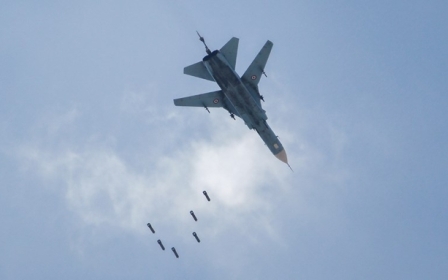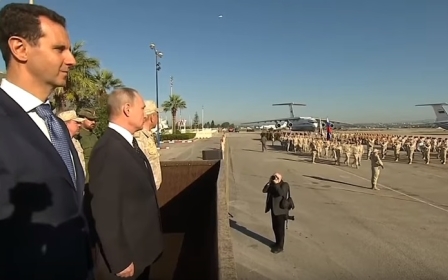Rebel-Damascus deal breaks Eastern Ghouta medical evacuation deadlock
Months of deadlock over medical evacuations from Syria's biggest remaining siege broke late on Tuesday when a deal between Damascus and a rebel faction allowed the Red Crescent to evacuate a handful of critically ill patients.
The Jaish al-Islam rebel group in Eastern Ghouta said it was releasing 29 detainees. In return, the government is allowing the evacuation of 29 of the most critical cases.
The number of people in Eastern Ghouta needing urgent evacuation has shrunk because they keep dying while waiting for help
- Jan Egeland, head of UN's humanitarian taskforce for Syria
Almost 400,000 people in Eastern Ghouta are besieged by pro-government forces, and the United Nations has pleaded for allowing the evacuation of around 500 patients, including children with cancer.
The Syrian American Medical Society (SAMS) said four patients were taken to hospitals in Damascus, the first of 29 critical cases approved for medical evacuation, and the remainder would be evacuated over the coming days.
However, one person on the list, a six-month-old baby girl, died before she could be evacuated, said Mohamad Katoub, an advocacy manager for SAMS, on Twitter.
Eastern Ghouta, a densely populated pocket of satellite towns and farms, is the only major rebel stronghold near the capital Damascus. The military has steadily defeated pockets of armed rebellion in western Syria over the past year, with the help of Russian air power and Iranian-backed militias.
The International Committee of the Red Cross (ICRC) said it had facilitated the deal, which came two months after the United Nations asked Assad's government to allow the urgent evacuation of the 29 patients. The operation was still in a very early phase, it said.
The Syrian government did not immediately comment on the evacuation.
A Jaish al-Islam political official in Ghouta said the Syrian Arab Red Crescent (SARC) mediated between Damascus and the rebels for the swap.
"We worked to get them out through the Red Crescent, and we are working on evacuating the rest of the nearly 500 cases out," said Yasser Delwan. But there was no indication of whether more evacuations would be allowed, he added.
The UN has pleaded for the government to allow evacuation of around 500 patients, including children with cancer, and has said there was no excuse for not permitting their evacuation to go ahead.
Worst malnutrition
Although Eastern Ghouta is officially a "de-escalation zone" under Russian-led ceasefire deals for rebel territory, fighting there has continued. The population, including 130,000 children, is suffering the worst malnutrition seen in the almost seven-year war, the UN has said.
Bassam Khabieh, a Ghouta-based photographer who has documented the grim effects of malnutrition on the district's children, told Middle East Eye last month that the humanitarian situation was becoming increasingly dire.
Residents and aid workers said the government has tightened the siege in recent months in what they called a deliberate use of starvation as a weapon of war, a charge the government denies.
On Sunday, Turkish President Tayyip Erdogan said Turkey was working with Russia, Assad's ally, on the evacuations. Ankara has backed some rebel factions in the Syrian war.
The number of people needing urgent evacuation has shrunk because they keep dying while waiting for help, the UN has said. It has a priority list of 494 patients, while SAMS put the number of critical cases at 641, and said 17 had already died.
The remainder of the 29 patients included in the deal would be evacuated over the coming days, said SAMS, a non-profit that supports hospitals mostly in opposition areas.
"The list includes 18 children and four women suffering from heart disease, cancer, kidney failure, and blood diseases, in addition to cases requiring advanced surgery that are not available in the besieged area," it said.
Middle East Eye propose une couverture et une analyse indépendantes et incomparables du Moyen-Orient, de l’Afrique du Nord et d’autres régions du monde. Pour en savoir plus sur la reprise de ce contenu et les frais qui s’appliquent, veuillez remplir ce formulaire [en anglais]. Pour en savoir plus sur MEE, cliquez ici [en anglais].





